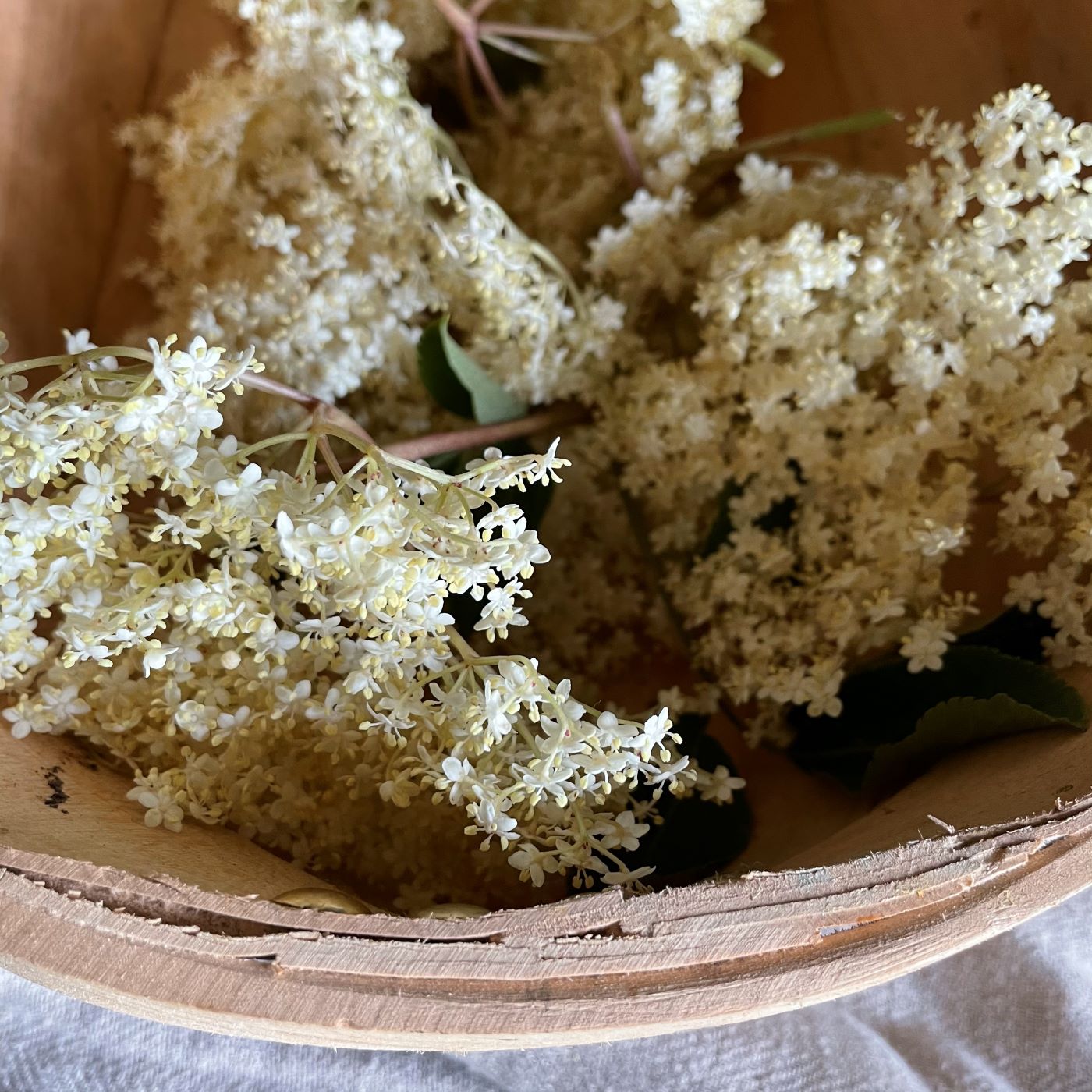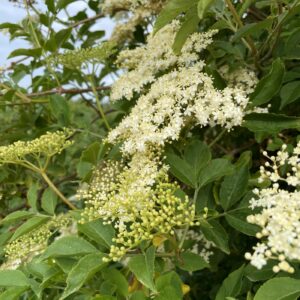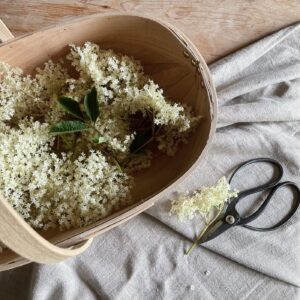You have no items in your cart. Want to get some nice things?
Go shopping
Elderflower is a late spring, early summer scent and sight that’s reminiscent of country walks and picnics. Refreshing elderflower cordial is one of the most popular ways to use foraged elderflower. Once made into cordial, it’s endlessly versatile and a great base flavour for a number of summery desserts and cocktails. Much like foraging for wild garlic or picking blackberries, elderflower is also easy to identify when its in bloom, making it a great choice for first time foragers.
When does elderflower bloom?
Elderflower comes into season in late May, but is generally at its best in June.
How to identify elderflower
Elderflowers grow on the elder tree (Sambucus Nigra), which is a bushy shrub with five to seven leaflets per stalk. The green leaves are saw-toothed and the flat-topped flowerheads of small, creamy-white flowers look a little like lace, but are much more compact than say, cow parsley. The sweet scent is also a clear sign you’ve found it.
You’ll often find elder trees along hedgerows or in fields with trees.


How to harvest elderflower
- Pick elderflower on a warm, sunny day
- Avoid gathering elderflower near roads as the flowers can take on the vehicle fumes – the flowers should smell fresh, not musty or like urine
- Snip the flower head from the main stem with a sharp pair of secateurs or scissors – you’ll want to cut as close as you can to the flower head, avoiding cutting too much of the main stem
- Follow foraging guidelines – seek permission and only pick in areas where elderflower is abundant
- Leave plenty of flower heads behind as these turn into elderberries in late summer which is an important source of food for wildlife
- Elderflowers must be cooked before eating as they’re mildly toxic when raw
How to use elderflower: recipes
Making elderflower cordial or syrup is often first step to making a range of delicious cocktails and desserts. Elderflower goes well with fruits like strawberries and makes a winning combination with mint. Boasting a fresh, refreshing flavour, elderflower can add an extra twist to sorbet, pavlova and semifreddo.
- Mix a Hugo cocktail – mint leaves, elderflower cordial, soda and prosecco
- Thyme, elderflower and lemon ice lollies
- Strawberry, elderflower and lemon meringue
Celebrate late spring and early summer with our slow food and seasonal eating guides:
